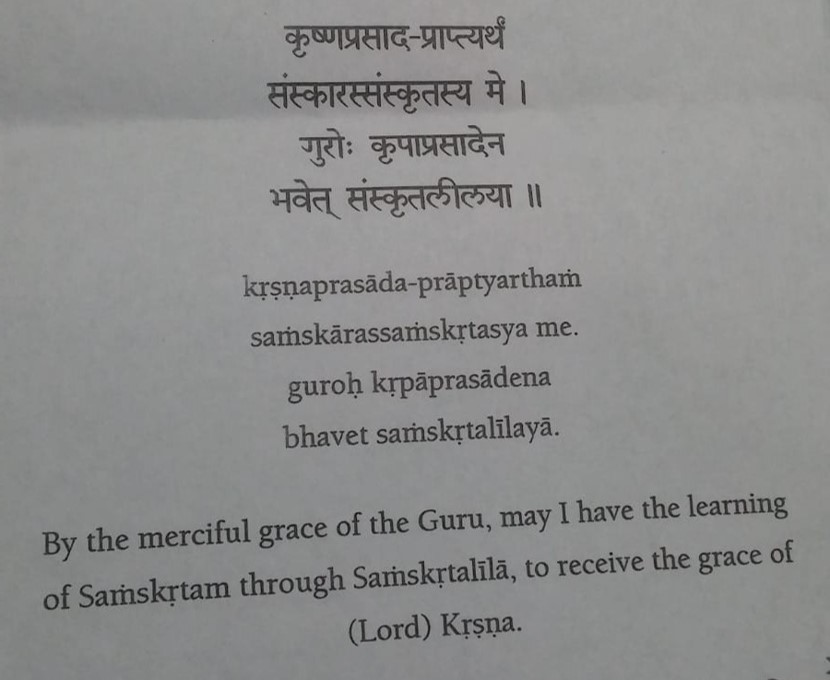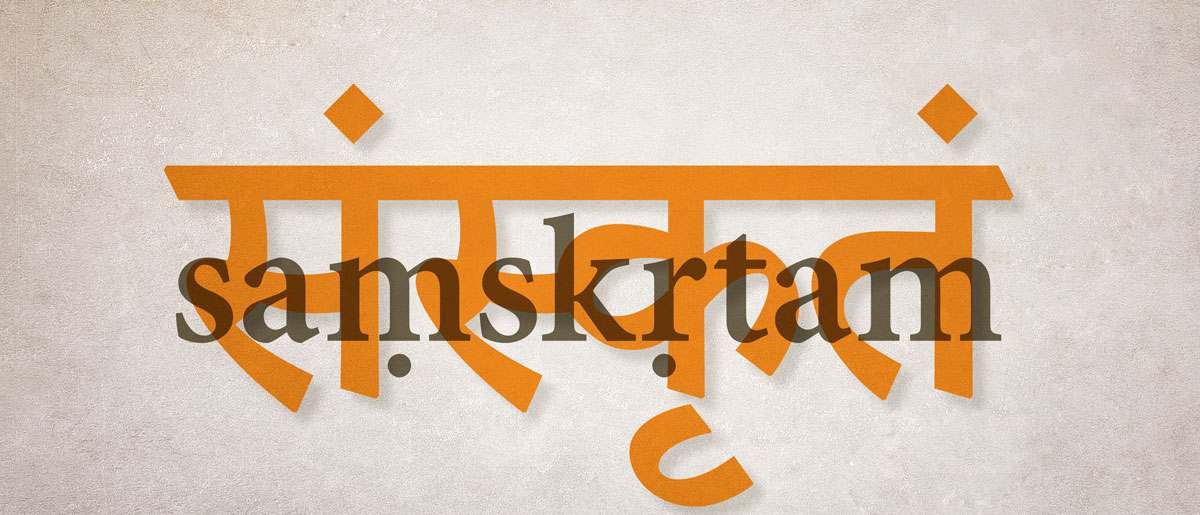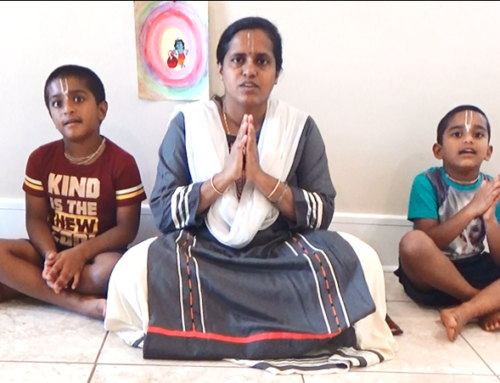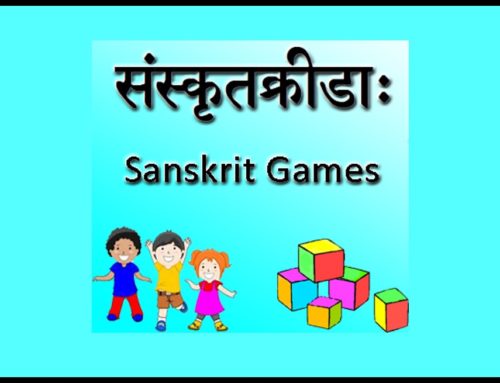In this article we will provide you the step-by-step lesson plan of how by using the Alphabet Chart set and Alphabet Cards set one can learn Sanskrit, Devanagari alphabet in 10 easy lessons.
As Sanskrit is all about proper sound vibration, it can be written in any language – English (called as transliteration) or Telugu or Tamil etc. In here we will learn how to read and write Sanskrit in Devanagari – language of the demigods.
In the rest of the document we will be presenting the lesson plan.
Prayer/Invocation:
 Recite the above Sanskrit verse three times. Initially with the students repeating after the teacher. Afterwards when students have learnt it, everyone shall recite together three times. In addition one can recite other invocation verses – Srila Prabhupada pranam manthra, Panca tattva manthra, Hare Krishna manthra etc.
Recite the above Sanskrit verse three times. Initially with the students repeating after the teacher. Afterwards when students have learnt it, everyone shall recite together three times. In addition one can recite other invocation verses – Srila Prabhupada pranam manthra, Panca tattva manthra, Hare Krishna manthra etc.
Preparation for the lesson:
Using the resources above perfect your pronunciation and learn how to write the letters.
Materials for lesson:
Dry erase Board, Dry erase marker, Wiper, Pointer to point the alphabet chart.
Notebook, Pencil, Eraser per student.
Review of lessons covered thus far:
Students, esp kids learn with repetition. So before we start a new lesson, we review what we covered thus far. We can also ask some quiz questions to the students during this time. For ex: Show a letter learnt and ask them to tell what it is.
New lesson:
Teach the new lesson for that week as covered in the lesson plan below.
Homework grading:
Teacher or assistant teacher will grade that week’s homework with each student. While grading she can ask student what a random letter is, check the handwriting and if letters are written legibly.
Use the pointer and show each of the vowels on the “Vowels” Alphabet Chart and utter its sound. Ask the students to repeat after the teacher. Do this exercise thrice.
Now using the dry erase board show them how to write each of the vowels along with its sound. Student should write the same letter in his note book after the teacher. You may have to hold the hand of the student and make them write a few times.
Now use the “vowels” set of Alphabet cards and show the letter with its utterance, turn it back and tell the Sanskrit word and its English meaning. Again students should repeat with the teacher. For ex: Teacher says “ऌ” (flip the card) “कॢप्तं” (kliptam) limited, students repeat “ऌ” “कॢप्तं” (kliptam).
Games: Sequence game with letters learnt thus far, “show and tell” game with letters learnt.
Homework: During the week students should write all the vowels three times by looking at the “Vowels” Alphabet Chart. They need to pronounce the letters while writing.
Utter all the letters learnt thus far with students repeating after. As the students become familiar with the alphabet you can ask them to tell the alphabet sequence in reverse as well. Like from:अः to अ instead of from अ to अः. Quiz them by pointing a random letter to each student and asking them its pronunciation.
New lesson:
Jiva goswami calls consonants as “Vishnujana” (Followers of Vishnu) as they need support of the vowels to be pronounced. Consonants are divided into vargas or rows and named after the first consonant in that row. Therefore we call them: kavarga, chavarga, tavarga, thavarga, pavarga.
Follow the same lesson pattern as in “Lesson 1” but teaching only five new consonants in the “Kavarga”.
Games: Sequence game, “show and tell” game.
Homework: During the week, students should write all letters learnt thus far three times by looking at the charts. They need to pronounce the letters while writing.
Follow the same lesson pattern as lesson 2, but teaching new letters from “Chavarga” row.
Follow the same lesson pattern as lesson 2, but teaching new letters from “Tavarga” row.
Follow the same lesson pattern as lesson 2, but teaching new letters from “Thavarga” row.
Follow the same lesson pattern as lesson 2, but teaching new letters from “Pavarga” row.
Follow the same lesson pattern as lesson 2, but teaching new letters from य र ल व …
Use the varnamala sequence charts to teach how each consonant can combine with the vowel to make its varnamala sequence. We call them “ka” sequence, “cha” sequence etc.
Games: “Read the letter” game.
After giving the students enough practice, when you are confident that students can write and pronounce all the vowels, consonants and varnamala correctly. You can announce the test date.
During the test, each student should write without seeing: all the vowels, the consonants and a varnamala sequence of a consonant they have practiced.
That’s it. Your students have learnt a new alphabet in just 10 lessons. Feel very grateful that we were able to assist you all in this journey.




